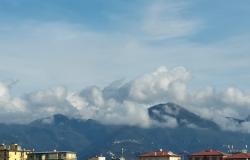The Most Spectacular Fireworks Are Coming to Venice This Weekend
ITA:

Use player to listen to Italian version
The Festa del Redentore is celebrated in Venice every year on the third Sunday in July to remember the end of the terrible plague that hit the city between 1575 and 1577.
In 1576, Doge Alvise Mocenigo promised to God he would build a magnificent church if the plague ended. Andrea Palladio was commissioned to build the church on the Island of Giudecca. When the plague ended a year later, the new Doge Sebastiano Venier honored the promise to God by building a temporary small wooden church, later replaced by the church known as Il Redentore, which was consecrated in 1592 and is one of the most important examples of Palladian religious architecture.
A temporary bridge of barges was also built to connect the two sides of the Giudecca canal, so that the Doge could walk in procession to the tabernacle. The pilgrimage to the Church of Redentore became an annual tradition which continues to this day.
The Festa del Redentore (Feast of the Redeemer) is now one of Venice’s most popular festivals, beginning on Saturday, the eve of the feast, when Venetians begin to decorate their boats with balloons and garlands, which, at sunset, will fill St. Mark’s basin. Many await the fireworks while dining on the boats. Around 10 pm, the spectacular fireworks show begin.
On Sunday, the traditional Redeemer Regattas, Venetian rowing competitions divided according to age and type of boats, take place along the Giudecca Canal.
La Festa del Redentore si celebra a Venezia ogni anno la terza domenica di luglio per ricordare la fine della terribile pestilenza che colpì la città tra il 1575 e il 1577.
Nel 1576, il Doge Alvise Mocenigo promise a Dio che avrebbe costruito una magnifica chiesa se la peste fosse finita. Andrea Palladio fu incaricato di costruire la chiesa sull'isola della Giudecca. Quando la peste terminò un anno dopo, il nuovo doge Sebastiano Venier onorò la promessa a Dio costruendo una piccola chiesa di legno temporanea, poi sostituita dalla chiesa conosciuta come Il Redentore, che fu consacrata nel 1592 ed è uno dei più importanti esempi di architettura religiosa palladiana.
Fu anche costruito un ponte provvisorio di barche per collegare le due sponde del canale della Giudecca, in modo che il Doge potesse camminare in processione fino al tabernacolo. Il pellegrinaggio alla Chiesa del Redentore è diventato una tradizione annuale che continua ancora oggi.
La Festa del Redentore è oggi una delle feste più popolari di Venezia, che inizia il sabato, quando i veneziani cominciano a decorare le loro barche con palloncini e ghirlande che, al tramonto, riempiranno il bacino di San Marco. Molti attendono i fuochi d'artificio mentre cenano sulle barche. Verso le 22:00 iniziano gli spettacolari fuochi d’artificio.
La domenica si disputano le tradizionali regate del Redentore, gare di voga veneta suddivise per età e tipologia di barche, lungo il Canale della Giudecca.











